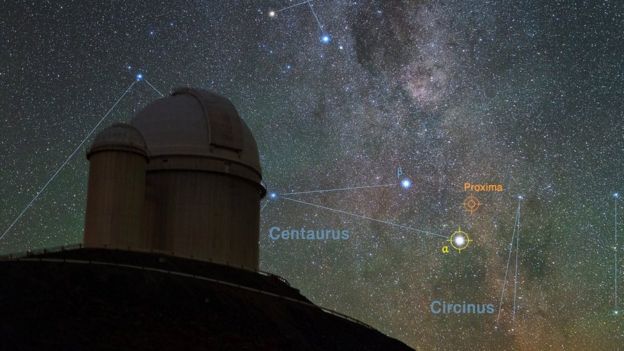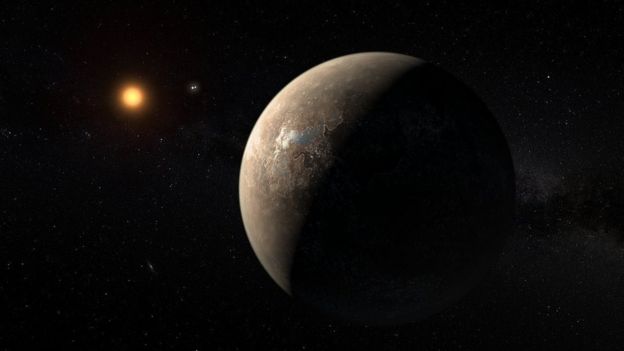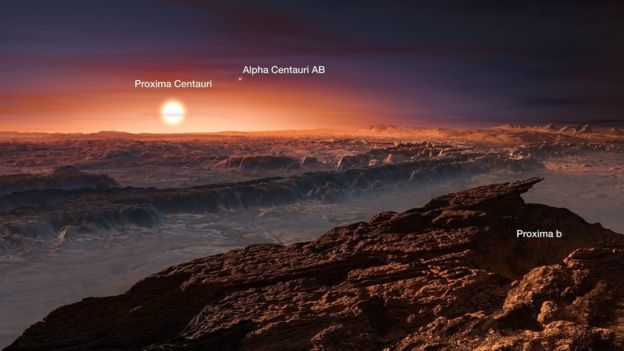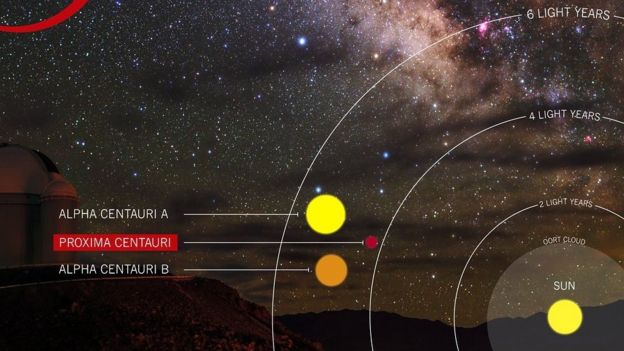The newly discovered exoplanet has conditions that could support life as we know it on Earth and is 4 light years from the solar system. The scientists confirmed their existence and are trying to investigate more
This time all the signs say it’s true: there is a planet out the solar system that has the necessary conditions for life, or as close as possible as we know it.
This is the planet called Next b orbiting star Proxima Centauri.
Unlike the Alpha Centauri Bb, discovered in 2012 as similar to Earth but planet whose existence was challenged in 2015, “signs life “of this planet are more accurate.
scientists Southern Space Observatory (ESO, its acronym in English) just shared this Wednesday some key this land not so distant cousin of our neighborhood.
1. It exists and is the closest

Next b is about 4 light years from the Solar System , which is one of the distances relatively closer to Earth to a planet similar to our never before detected.
“the first signs of a possible planet were in 2013, but the detection was not convincing” account Guillem Anglada-Escudé, the lead researcher Catalan scientist.
to confirm its existence, scientists reviewed for 60 days signals spectrograph HARPS, located in Chile, together with other telescopes around the world.
2. suitable temperature

This new planet is 7 million kilometers from its star, Proxima Centauri.
That means is a 5% of the distance from Earth to the Sun (149.6 million kilometers), how can it be living then?
“Your star is much weaker than the sun. As a result, Next b is within the habitable zone around the star and has an estimated surface temperature would allow the presence of liquid water, “explains ESO.
calculations indicate that it could having a temperature of about 4 C , which creates conditions to have water, the key factor of terrestrial life.
MORE SCIENCE NEWS
3. Their conditions

The mass of this planet is 1.3 times Earth and until now scientists believe it may have a rocky landscape , habitable for humans
the next video in English illustrates the discovery:
it is too early to reach conclusions, but the scientific debate focuses on determine if the atmosphere is evaporating slowly , as with similar planets and what kind of chemical possesses.
the surface might be getting “flares of X-ray and ultraviolet radiation” to its star that would be much stronger than we have on Earth, a factor to consider for life as we know.

4. Two-sided
It is still early to confirm, but astronomers considered “very likely” that the force of gravity influences the planet make one side is exposed to light and other remains dark.
the patterns that astronomers have detected lead them to conclude that this planet Proxima Centauri orbits every 11.2 days land.
5. Near and far

The idea of an Earth-like planet in a nearby neighborhood sounds good, but astronomical distances are considerable
Proxima Centauri is 40 trillion kilometers , a distance that would require thousands of years to reach with the technology we have.
the Juno mission, which toured three billion kilometers to reach Jupiter in July took five years to reach its goal in a stroke calculated to intercept the planet.
“of course, go there right now is science fiction, but people are thinking about it and is no longer just an academic exercise to imagine that we could send a probe there one day” Anglada said Escude.
No comments:
Post a Comment